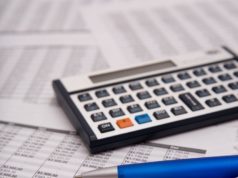
Simplifying Statistics: How to Calculate Standard Deviation
What is Standard Deviation?
• Standard deviation is a formula most often found in statistics, probability theory and formula. When applied to a set of data, standard deviation will calculate the variation present from the mean or expected value. For instance, a low standard deviation will indicate that the given data points are very close to the mean, while a high standard deviation denotes a large spread of data.
• In addition to expressing variables of a given population, standard deviation is also used to measure confidence in statistical conclusions or as a risk assessment in finance. For example, the margin of error in polling data is determined by calculating the standard deviation if the results had been conducted several times.
• Standard deviation is critical in finance, because the technique can elucidate on the rate of return for an investment or transaction. In essence, the standard deviation will yield the underlying investment or transaction’s volatility. An individual, in finance, will calculate standard deviation to find the percentage or level of risk for a given investment security (such as a stock or bond etc.) or the risk of actively managed bundles of securities (such as hedge funds, mutual funds, or ETFs).
• The basic concept of risk is that, as it increases, the expected rate of return for the underlying asset will increase to entice potential investors. Investors, in other words, should expect a higher return on a riskier investment to obfuscate the uncertainty latent in the purchase. In essence, standard deviation will provide a quantified estimation regarding the uncertainty of future returns.
How do I Calculate Standard Deviation?
• To calculate standard deviation, an individual must obviously know what formula to use. At first glance, the standard deviation formula may seem daunting; however, the standard deviation formula is considered fairly basic, especially when compared to other statistical equations.
• In a statistical study, a conclusion is formulated regarding a particular set of data and it’s variance from a control set. To formulate this conclusion, the standard deviation, must be applied. used is regarded as the standard deviation. As a result, the standard deviation is typically uniform to the average deviation from the mean.
The standard deviation formula is depicted below:
• In this formula, X is the value of mean, N is the sample size and X(i) represents each data value from i=N to i=1. The large “E” symbol represents the summation function in mathematics; this symbol indicates that must add up the sum. To utilize the standard deviation formula it is suggested that the individual have a basic understanding of algebra.

































